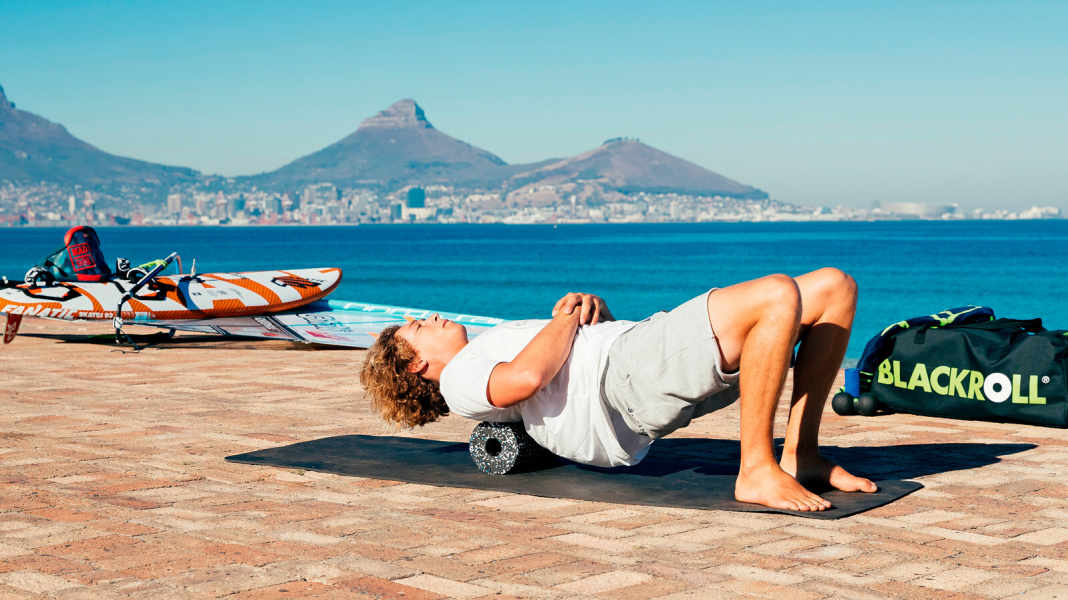
In this article:
Our expert Dr Lutz Graumann is a passionate sports physician. His hobby of sport has helped him to find his vocation. In addition to sports medicine, he also has additional qualifications in nutritional medicine and chiropractic/manual medicine. Due to the variety of research programmes in the USA, Canada and Germany, he has been recognised as an authority in the field of Performance Medicine + Functional Training for more than ten years.
Exclusively for surf magazine, he recommends helpful exercises to prevent the typical complaints.
Back pain 95 % avoidable
Windsurfing is a physically demanding sport. There are many reasons why windsurfing can cause back pain. These include a lack of fitness, a lack of routine in the movement sequences, constant instability on the moving surface and unexpected disruptive impulses from the environment (e.g. waves, gusts of wind).
Deep-seated back pain is a complex of symptoms with a wide variety of causes. Fortunately, 95 per cent of cases are of a functional nature, i.e. overloading is caused by suboptimal movement patterns coupled with an unnatural posture. Less than five per cent of back pain is caused by serious illnesses such as "truly symptomatic" disc changes, tumours or inflammation of the facets.
Even surfers are not spared from this problem. The tense posture on the board, coupled with recurring impact loads, can push the back muscles to the limit.
Accordingly, I recommend self-massage with the Blackroll both before and after surfing. To combat the causes and compensate for a lack of fitness, we have put together the most important exercises for strengthening the back here.
Rolling out the plantar fascia with the Blackroll
STARTING POSITION
- Start in an upright, hip-width stance.
- Place the Blackroll crosswise in front of your feet and place one foot in the centre of the roller.
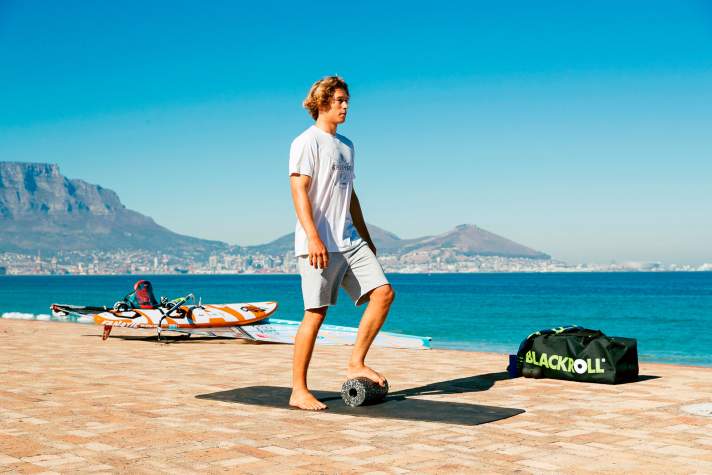
EXECUTION
- Slowly roll your foot back and forth on the Blackroll from the tips of your toes to your heel.
- First roll in the centre and after 3-4 repetitions tilt the foot slightly inwards to roll out the arch of the foot.
- After a further 3-4 repetitions, let your foot tilt slightly outwards on the roller to work the outer edge of the foot.
- Apply pressure to different areas by shifting your weight and repeat the exercise on the other side.
Loosening the lower back with the Blackroll
STARTING POSITION
- Start in an upright position and place your feet so that your knees are at an angle of around 90 degrees.
- Place the Blackroll behind the back, directly on the lumbar spine just above the waistline.
- Place your hands next to your body, slightly backwards.
- Lean your upper body backwards onto the roller and lift your buttocks.
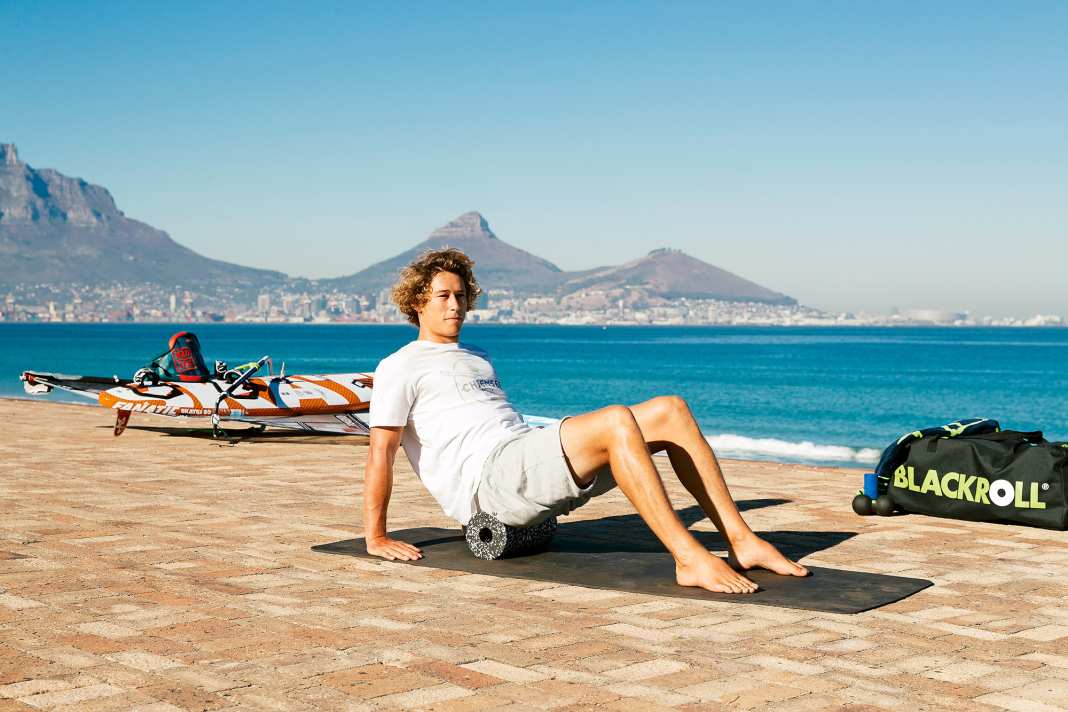


EXECUTION
- Slowly roll on the Blackroll in the direction of the thoracic spine up to the tips of the shoulder blades and back again by bending your legs further and stretching them a little.
IMPORTANT
Only if you can keep your torso stable without any problems can you increase the pressure on the roller by crossing your hands in front of your chest.
Loosening the upper back with the Blackroll
STARTING POSITION
- Start in an upright position and place your feet so that your knees are at an angle of around 90 degrees.
- Place the Blackroll behind your back at the level of the tips of your shoulder blades.
- Lean your upper body backwards onto the roller and lift your buttocks.
- Fold your hands in front of your chest.
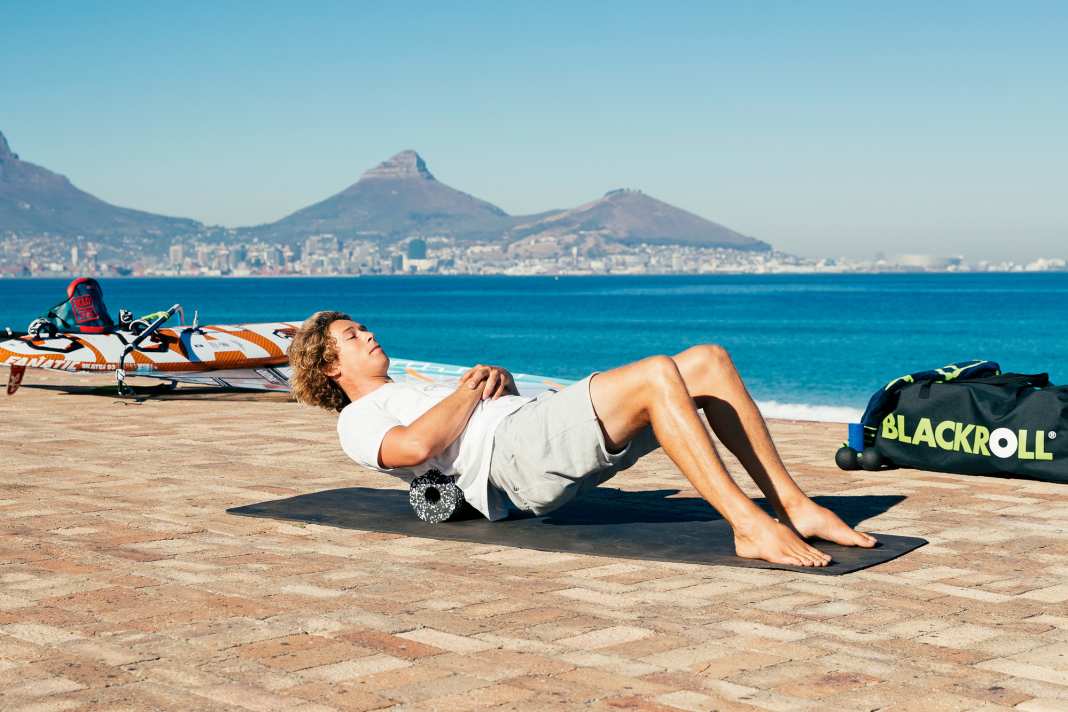


EXECUTION
- Slowly roll the thoracic spine on the Blackroll in the direction of the neck.
IMPORTANT:
- Do not roll up to the neck, but turn round again just before the cervical spine.
- If you want to roll further into the neck, stretch your arms out in extension of your torso and hold them next to your ears to protect your neck.
Loosening the lateral trunk (latissimus) with the Blackroll
STARTING POSITION
- Start in a sideways position on the floor on your left side and stretch out your left (lower) arm as an extension of your torso.
- Place the Blackroll under the side of your torso just below your ribcage and place your right foot on the floor behind your left knee.
- Support yourself with your right hand in front of your chest for a stable position.
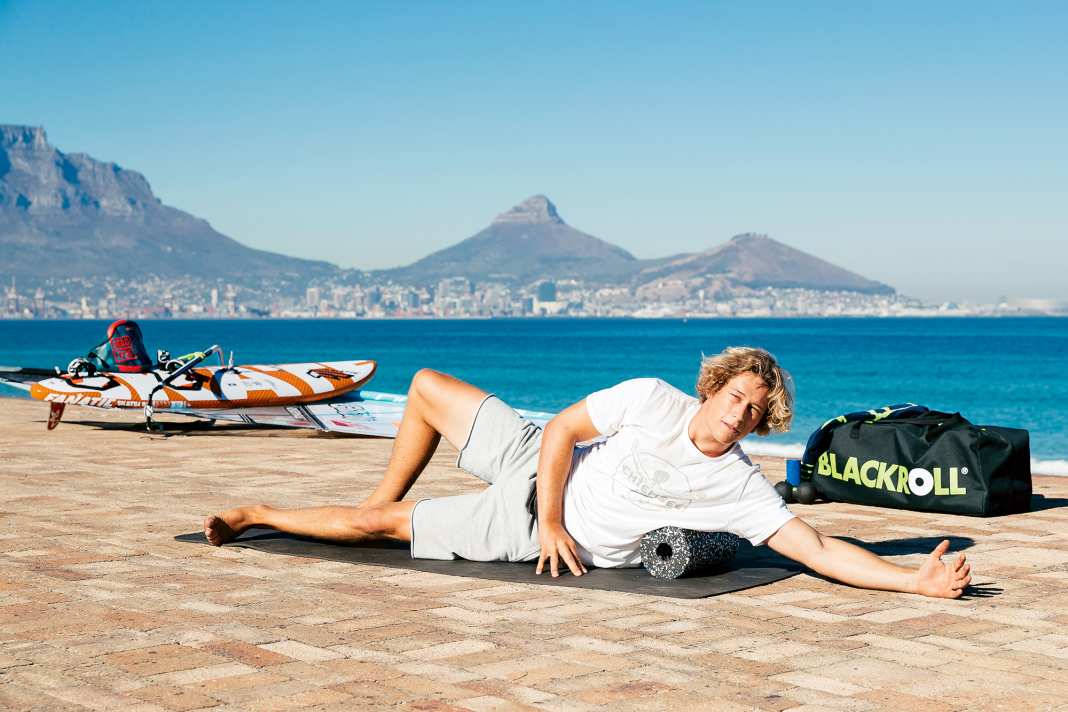


EXECUTION
- Slowly roll your side torso upwards on the Blackroll into the armpit by pushing yourself over the roll with your left leg.
Mobilisation of the thoracic spine with the Duoball
STARTING POSITION
- Place the Duoball below the tips of the shoulder blades and lie on your back on the floor.
- Place your arms on the floor next to your head.
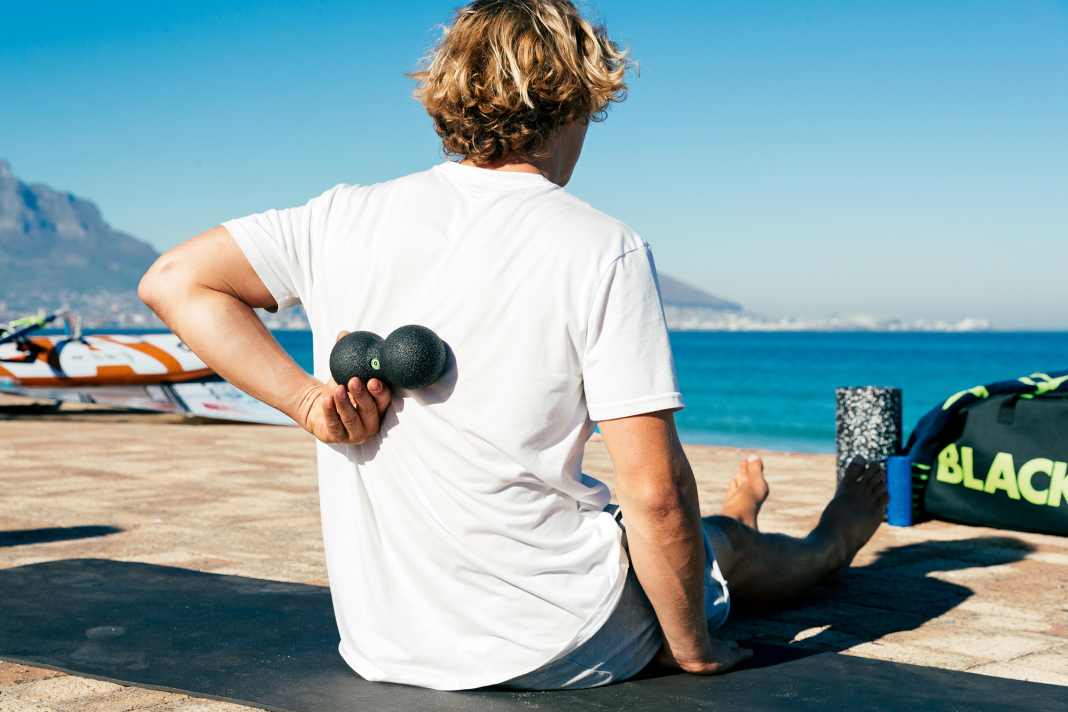



EXECUTION
- Extend your arms far back, pulling your entire body in length.
- Tilt your head back, straighten your thoracic spine and tilt your pelvis so that your upper body forms an arch over the duo ball from your buttocks to your hands.
Dynamic forearm support
STARTING POSITION
- Start in forearm support and place the Blackroll under the forearms, just below the elbows.
- Always keep the torso under tension and the body in one line.
- The feet are shoulder-width apart and on tiptoe.
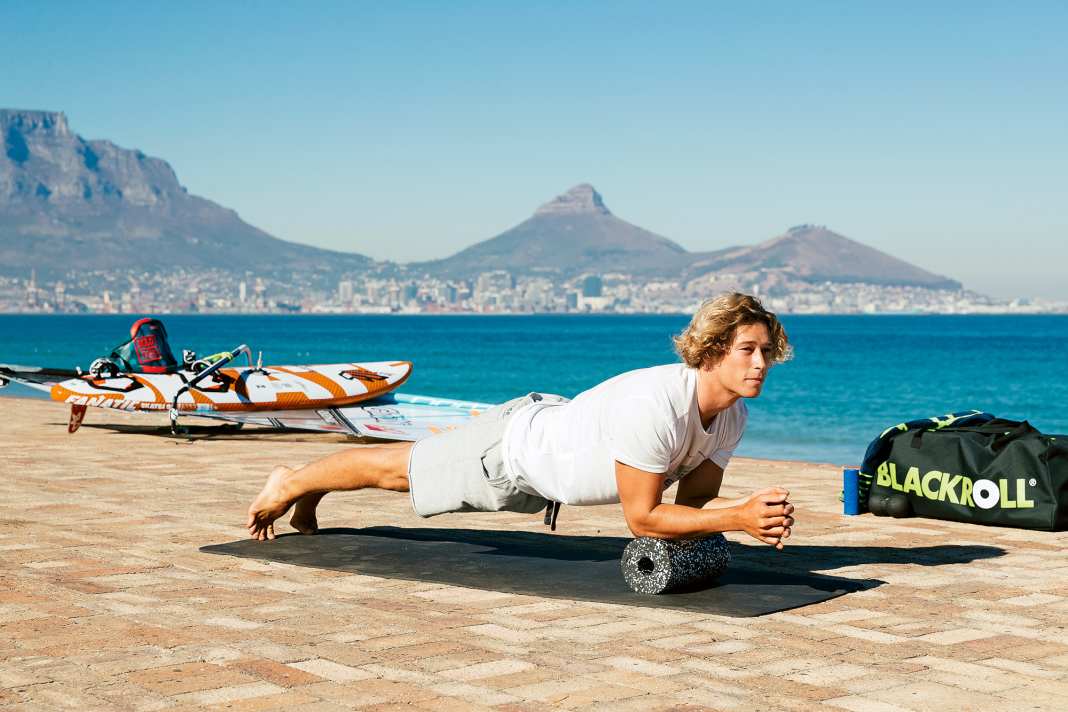



EXECUTION
- Keep your torso tensed and release one forearm from the roll.
- Extend your arm forwards and bring it back to the starting position.
- Then lift one leg off the floor and bring it upwards.
IMPORTANT
- Make sure that you keep your torso under constant tension and that your body remains in one line.
- Keep your hips parallel during dynamic movements and try not to rotate your hips.
Rolling the lateral trunk (latissimus)
STARTING POSITION
- Stand upright next to a wall.
- Extend your arm upwards, leaning towards the wall.
- Place the Blackroll between the wall and the torso below the chest.
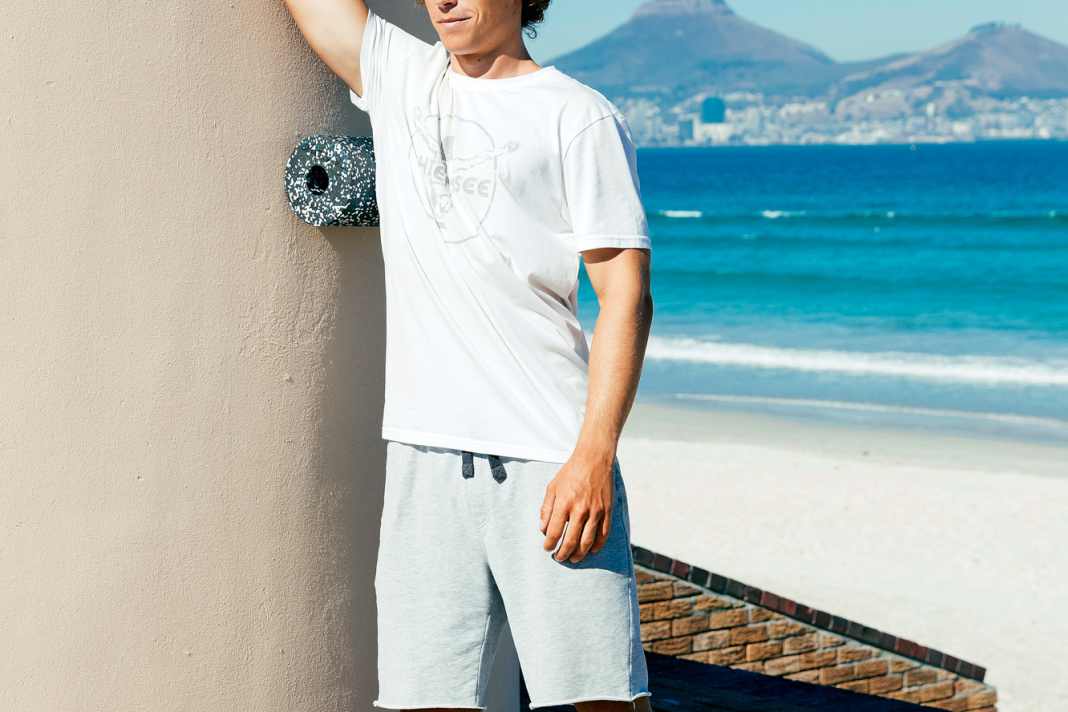


EXECUTION
- Roll out the side of the trunk (latissimus) by bending and stretching the legs up to the armpit.
- Vary the pressure on the roller by shifting your weight.

